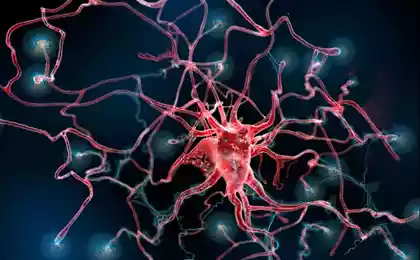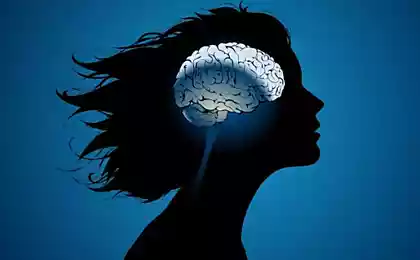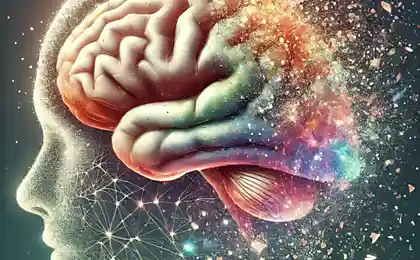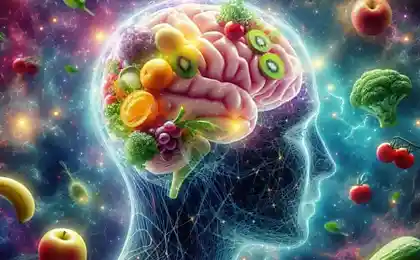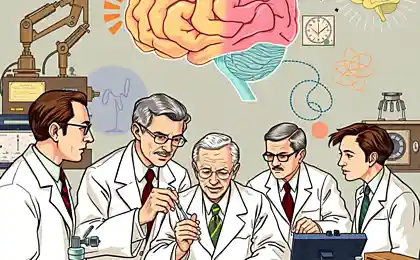189
Surprising facts about the brain that you probably didn’t know

The brain is one of the most complex and mysterious organs in our body, which, despite extensive research by scientists around the world, continues to give us surprises. Thanks to the discovery of new methods of neuroimaging, the progress of molecular biology and the development of theoretical models of consciousness,
We're getting closer to understanding how our body's command center really works. According to the National Institute of Mental Health (NIMH),
Neuroscience is one of the most intensively developing fields, capable of shedding light on the mechanisms of thinking, memory and emotions. In this article, we’ll look at some surprising facts and hypotheses that could change the way we do.
Your idea of your own brain.
1. The brain and its incredible plasticity
Neuroplasticity A term describing the brain’s ability to restructure and form new neural connections in response to experiences and external stimuli. It was previously believed that after the end of childhood, neural connections become “frozen” and can no longer change. However, modern research proves that
We are able to learn and reconfigure our nervous system throughout our lives.
What does that mean in practice? For example, in rehabilitation after a stroke, the patient can “retrain” healthy areas of the brain to perform functions that were previously responsible for damaged areas. According to the World Health Organization,
Such training significantly accelerates the recovery of speech, motor skills and coordination.
Fact: Neurogenesis in adults
Until a few decades ago, most neuroscientists believed that after the development of the body, no new neurons are formed. But Nature research.
evidence of neurogenesis (the birth of new nerve cells) in the adult brain, especially in the hippocampus, the area responsible for memory formation and learning. Although the scale of this process is small, the existence of adult neurogenesis offers hope for more effective approaches to the treatment of memory diseases and cognitive disorders.

2. Smell and memory: how are they related?
Many have noticed that sometimes a fleeting smell can evoke rich memories from the distant past. This phenomenon is due to the fact that the olfactory bulbs (structures responsible for the perception of smells) are directly related to the amygdala and the hippocampus, areas that play a major role in the formation and storage of memories. This “privileged” pathway makes smell one of the most powerful memory triggers because smells bypass a number of intermediate processing stations that exist for visual and auditory information.
Scientists are using the link between smell and memory to treat patients with memory impairments. Scent-based techniques help activate emotional memories and improve cognitive function, especially when working with older people.
3. The brain never rests.
The phrase “I need to free my head from thoughts” may sound logical, but from a neurobiological point of view, this is not entirely correct. The brain works continuously, even when we sleep. The state of “inactivity” that most people experience while resting or napping is actually due to the activity of a number of specialized neural networks, which scientists call “inactivity.” Defult Mode Network (DMN) -
Passive mode network.
Fact: Why do you need a DMN?
It is assumed that when we are not busy with a specific task and our thoughts wander, the DMN is activated. At such moments, the brain is engaged in internal processing: it consolidates memories, analyzes past experiences.
They make plans for the future and even participate in creative insights. Some research suggests that creative ideas are more likely to occur when the mind switches to a “background” mode, allowing subconscious processes to freely associate.
4. Left and right hemispheres: more similar than they think
In popular culture, there is a stereotype of the “left” and “right” hemispheres: one is responsible for logic and mathematics, and the other for creativity and art. It's actually a simplification. Yes, the hemispheres have small functional differences: for example, the center of speech is usually localized in the left hemisphere (in most cases, the center of speech is located in the left hemisphere).
Right-handed), and the perception of images is slightly stronger in the right. But the boundaries between the hemispheres are much less rigid than is commonly believed. To perform complex tasks, the brain simultaneously engages the interconnected regions of both hemispheres.
Interesting to know: People who have as a result of injury or surgery
there was a "disconnection" of communication between the hemispheres (division of the corpus callosum), can manifest peculiar
"dual" reactions. However, even with such a violation, some patients form a set of
strategies to compensate for the loss of interhemispheric communication.
5. Emotions and Brain: What Happens at the Cellular Level?
Emotions are more than just a psychological state: they are formed under the influence of complex emotions.
complex neurochemical reactions. Participation in the formation of emotions is taken by the amygdala (amygdala),
prefrontal cortex, hippocampus and a number of other structures. Fear, for example, activates pathways.
associated with the release of adrenaline, increased heart rate and mobilization of “flight or fight”.
- Dopamine: Participates in the mechanisms of reward and motivation, affects the feeling of pleasure.
- Serotonin: It helps regulate mood, sleep and appetite. Low serotonin levels are associated with depressive states.
- Oxytocin: It is often called the hug hormone. It promotes trust and intimacy in social relationships.
Understanding the biochemical nature of emotions helps to develop more effective methods for correcting psychological disorders and increases the effectiveness of psychotherapy. Therapeutic approaches combining drug support, cognitive-behavioral techniques and social rehabilitation give a more stable result in the treatment of depression, anxiety and post-traumatic conditions.

6. How to Use Brain Knowledge in Daily Life
The current level of research suggests that the brain is extremely flexible and multifaceted. We can improve his abilities, prevent age-related changes and harmoniously develop the emotional and intellectual spheres. To this end, several important principles should be taken into account:
- Continuing learning: Learning new skills, reading popular science literature, and even changing routines stimulate neuroplasticity and the formation of new connections.
- Physical activity: Regular exercise has a positive effect on the blood supply to the brain and promotes the production of “neuron growth factors” (BDNF).
- Healthy sleep: During sleep, the brain actively processes information and restores its resource. Lack of sleep negatively affects cognitive processes and emotional stability.
- Stress management: Chronic stress leads to increased cortisol levels, which can impair memory and concentration. Relaxation practices, meditation, and support for loved ones help keep
Stress is under control. - Social activity: Communication and participation in collective projects protect against cognitive decline and reduce the risk of depression.
Thus, modern neuroscience opens up exciting possibilities for understanding our own brain and managing its potential. Developing a conscious attitude towards their cognitive and emotional
We can maintain a high quality of life, creativity and clarity of mind for many years to come.
The Art of Photography: How to Take Beautiful Pictures on Your Phone
Why Adults Are Important to Play: The Hidden Superpowers That Are Silent About



